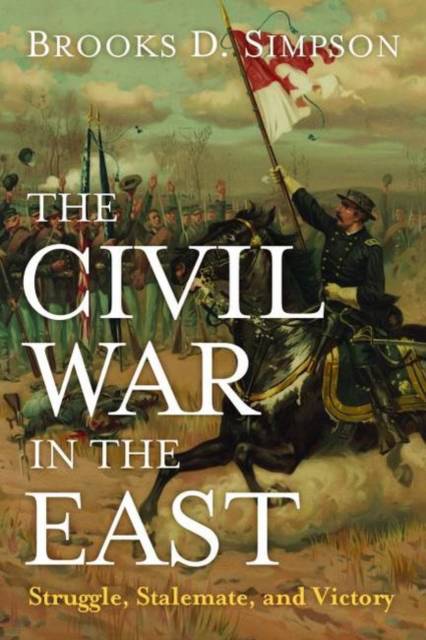
- Afhalen na 1 uur in een winkel met voorraad
- Gratis thuislevering in België vanaf € 30
- Ruim aanbod met 7 miljoen producten
- Afhalen na 1 uur in een winkel met voorraad
- Gratis thuislevering in België vanaf € 30
- Ruim aanbod met 7 miljoen producten
Zoeken
€ 31,95
+ 63 punten
Omschrijving
For all the literature about Civil War military operations and leadership, precious little has been written about strategy, particularly in the eastern theater. The Civil War in the East takes a fresh look at military operations in this sector and the assumptions that shaped them.With opposing capitals barely a hundred miles apart and with the Chesapeake Bay-Tidewater area offering Union generals the same sorts of opportunities that Confederate leaders sought in the Shenandoah Valley, geography shaped military operations in fundamental ways. Presidents, politicians, and the press peeked over the shoulders of military commanders, some of whom were not reluctant to engage in their own intrigues as they promoted their fortunes.The location of the respective capitals raised the stakes of victory and defeat. At a time when people viewed war in terms of decisive battles, the anticipation of victory followed by disappointment and persistent strategic stalemate characterized the course of events in the East.
Specificaties
Betrokkenen
- Auteur(s):
- Uitgeverij:
Inhoud
- Aantal bladzijden:
- 162
- Taal:
- Engels
Eigenschappen
- Productcode (EAN):
- 9781612346281
- Verschijningsdatum:
- 1/08/2013
- Uitvoering:
- Paperback
- Formaat:
- Trade paperback (VS)
- Afmetingen:
- 150 mm x 226 mm
- Gewicht:
- 272 g

Alleen bij Standaard Boekhandel
+ 63 punten op je klantenkaart van Standaard Boekhandel
Beoordelingen
We publiceren alleen reviews die voldoen aan de voorwaarden voor reviews. Bekijk onze voorwaarden voor reviews.








